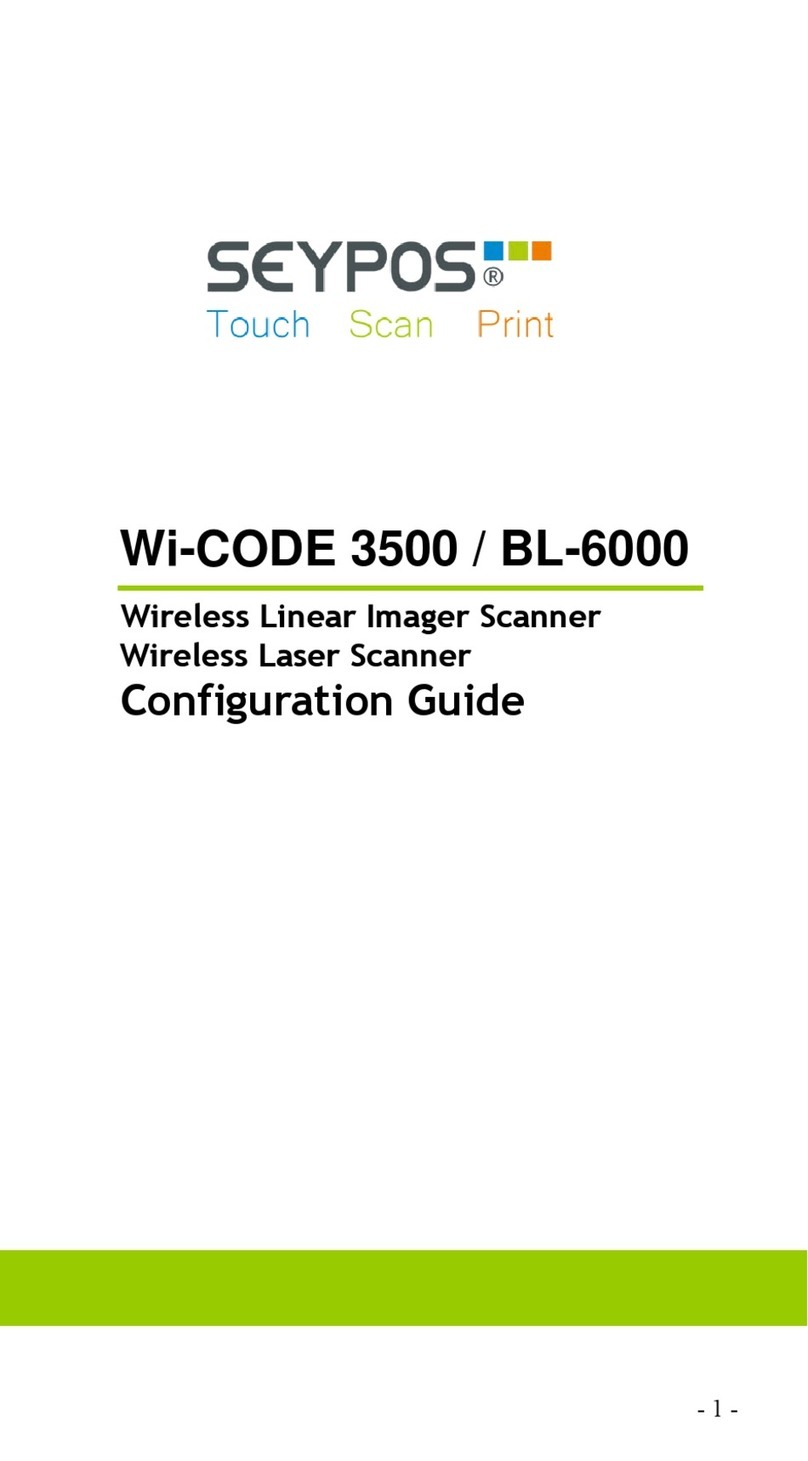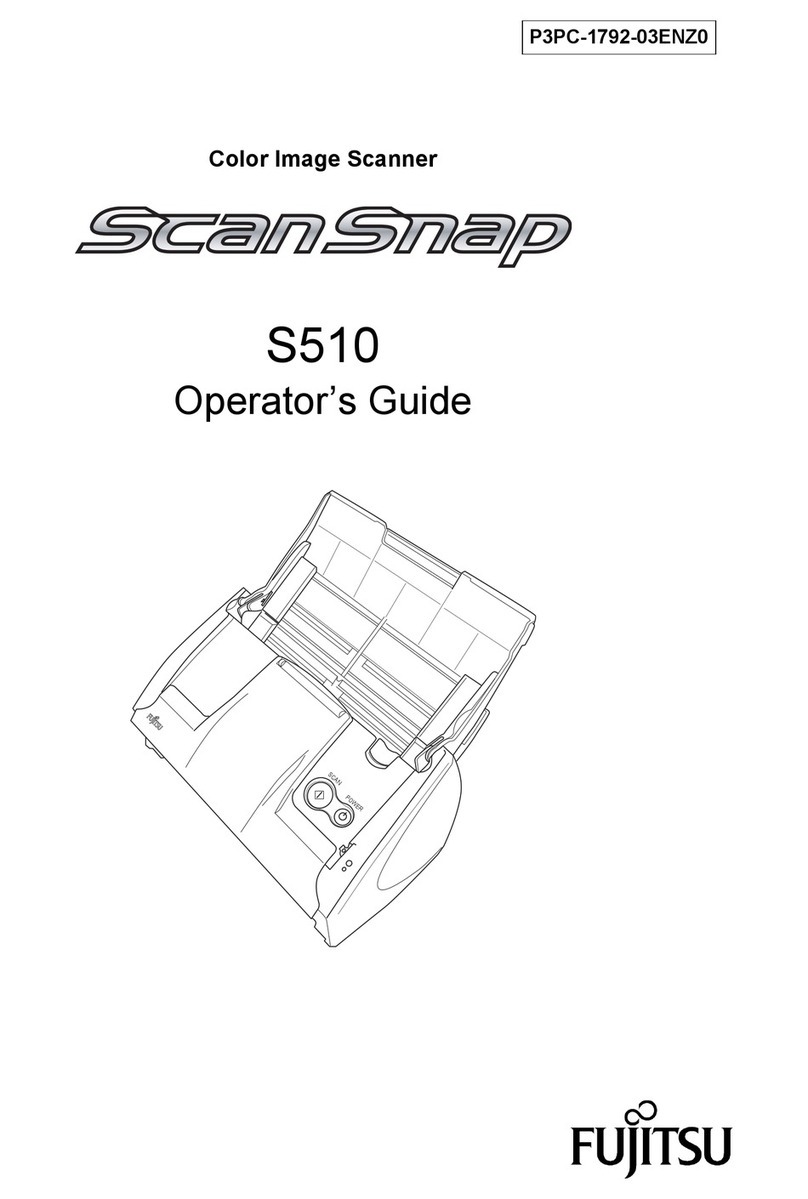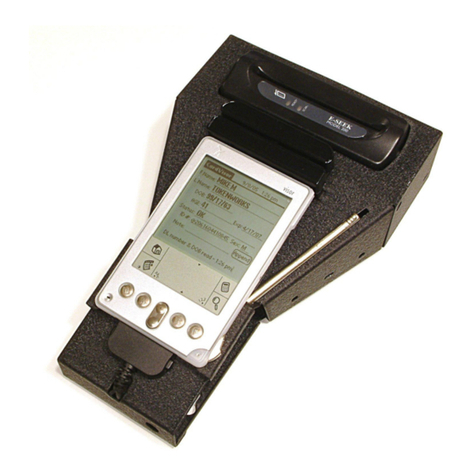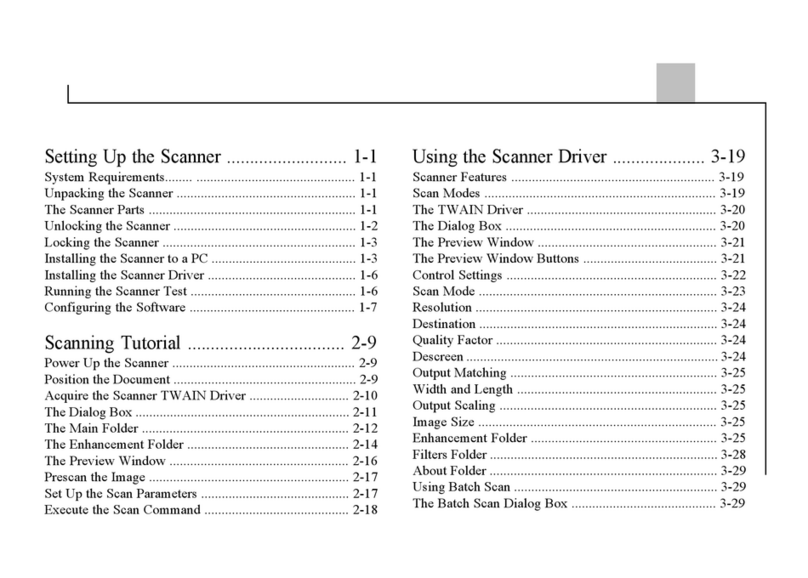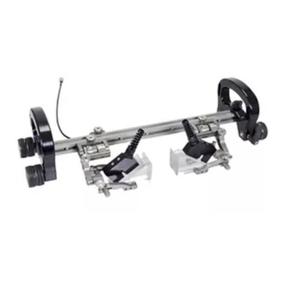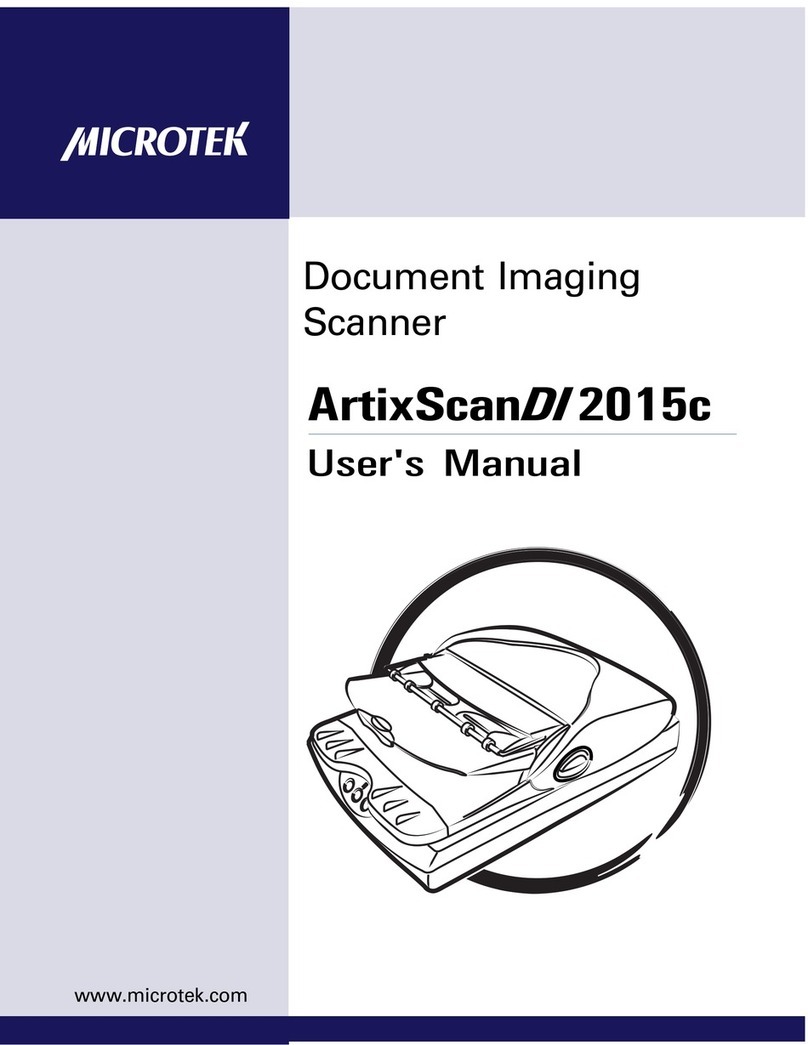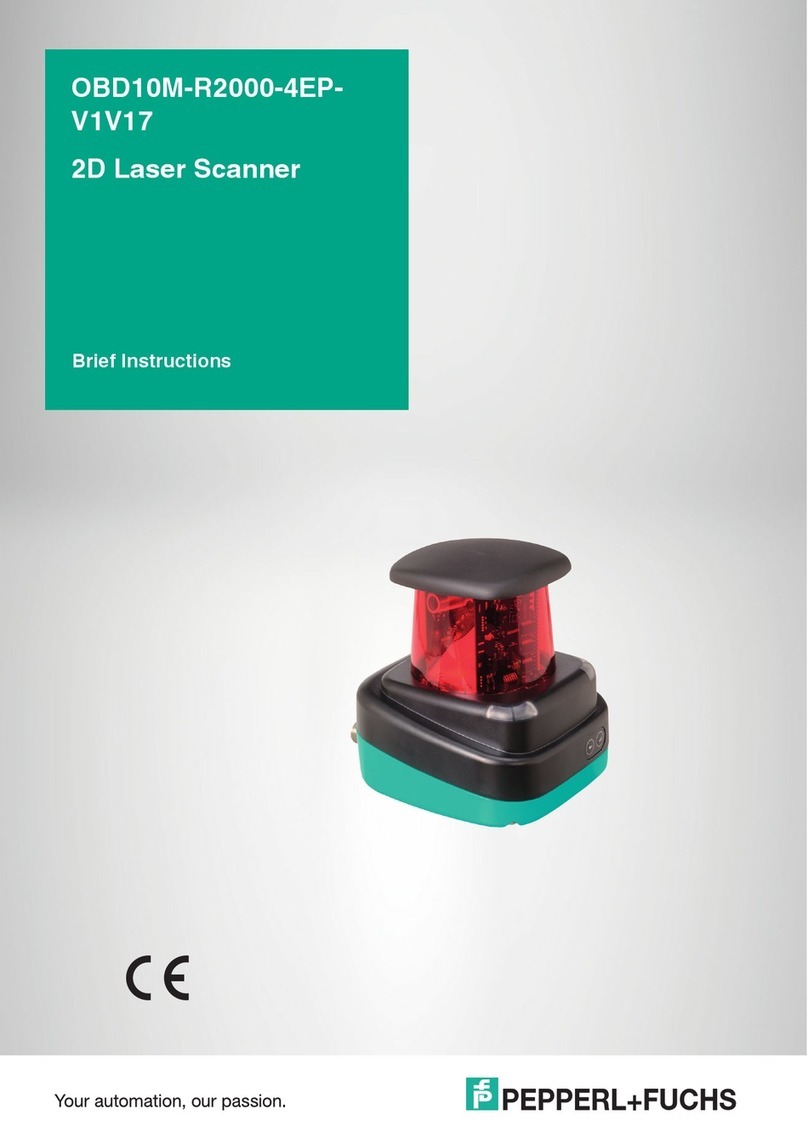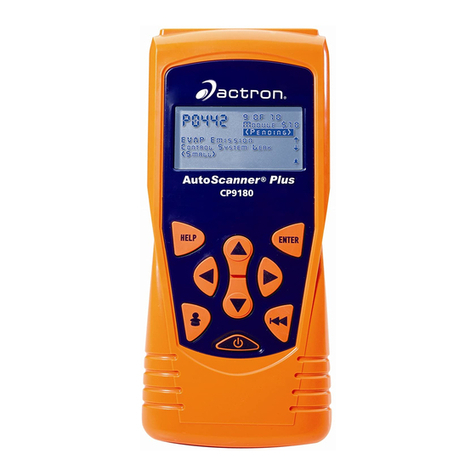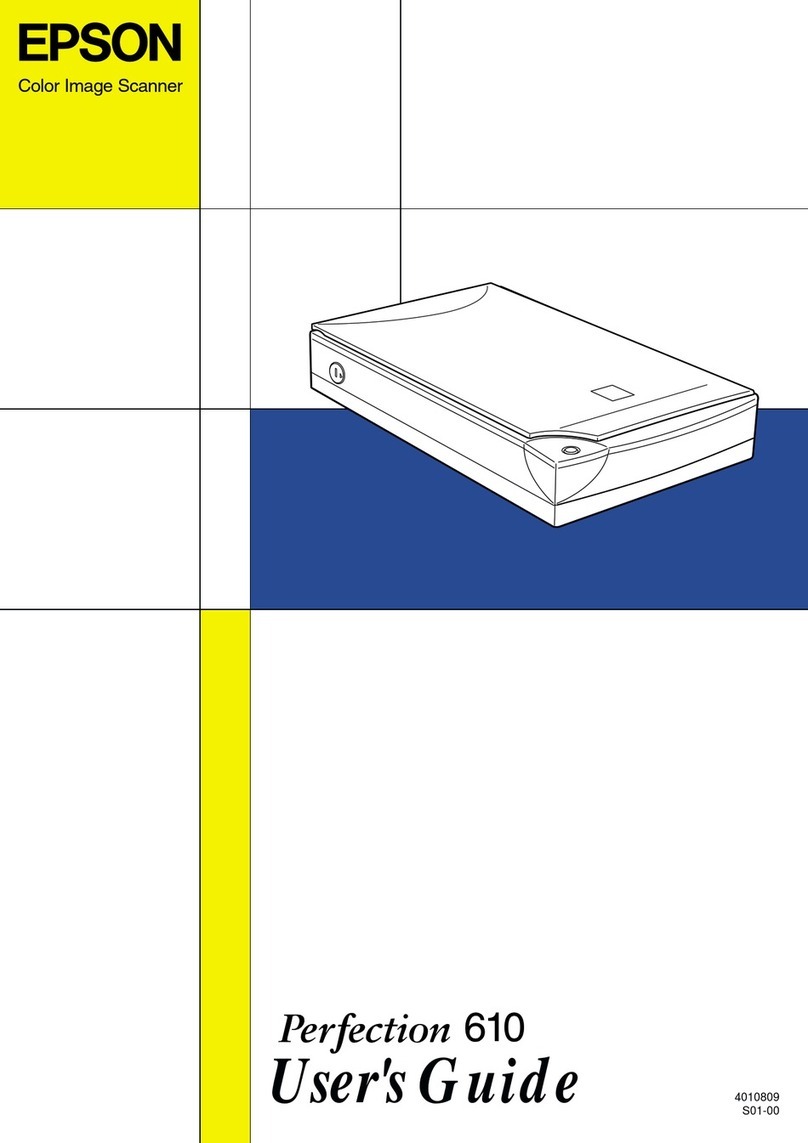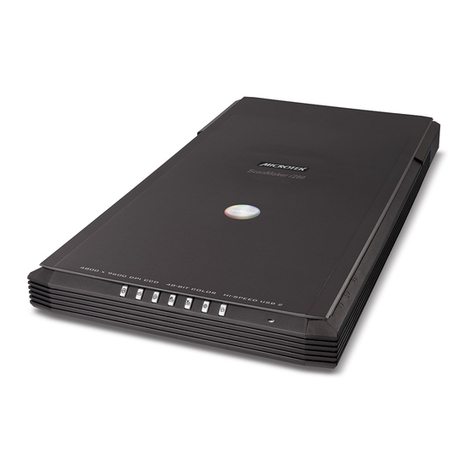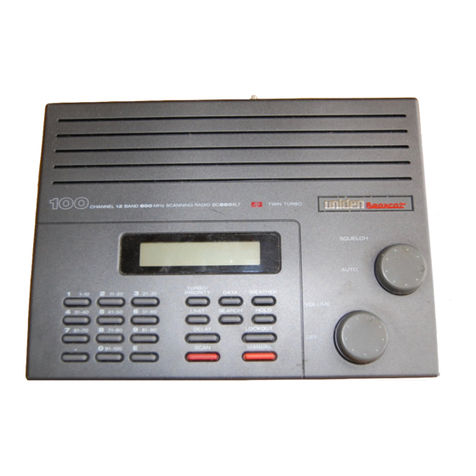Seypos DT6800 User manual

Configuration Guide
SEYPOS-DT6800
Hand Free Area Image Scanner
V1.3

Table of Contents
Chapter 1 General Description .............................................. 1
Chapter 2 Introduction.......................................................... 2
Chapter 3 User Preferences................................................... 4
RETURN TO DEFAULT................................................................................ 4
PARAMETER SCANNING........................................................................... 5
BEEPER TONE.............................................................................................. 6
BEEPER VOLUME........................................................................................ 7
BEEPER DURATION.................................................................................... 7
TRIGGER MODES ........................................................................................ 8
POWER MODE.............................................................................................. 9
Mobile Phone/Display Mode ................................................................. 9
Chapter 4 Serial Interface ...................................................
SERIAL PARAMETER DEFAULTS.......................................................... 11
SERIAL HOST TYPES................................................................................ 12
BAUD RATE ................................................................................................. 13
PARITY.......................................................................................................... 14
STOP BIT SELECT...................................................................................... 15
DATA BITS.................................................................................................... 15
10

- II -
CHECK RECEIVE ERRORS...................................................................... 16
HARDWARE HANDSHAKING................................................................... 17
SOFTWARE HANDSHAKING ................................................................... 19
HOST SERIAL RESPONSE TIME-OUT.................................................. 21
RTS LINE STATE ........................................................................................ 22
INTERCHARACTER DELAY ..................................................................... 23
Chapter 5 USB Interface......................................................
USB HOST PARAMETERS ....................................................................... 31
USB COUNTRY KEYBOARD TYPES (COUNTRY CODES)............... 33
USB KEYSTROKE DELAY ........................................................................ 35
USB CAPS LOCK OVERRIDE.................................................................. 35
USB IGNORE UNKNOWN CHARACTERS............................................. 36
EMULATE KEYPAD.................................................................................... 36
USB KEYBOARD FN 1 SUBSTITUTION................................................. 37
FUNCTION KEY MAPPING....................................................................... 37
SIMULATED CAPS LOCK.......................................................................... 38
CONVERT CASE......................................................................................... 38
ASCII CHARACTER SET FOR USB........................................................ 39
30

- III -
Chapter 6 Symbologies .......................................................
SYMBOLOGY PARAMETER DEFAULTS............................................... 51
UPC/EAN....................................................................................................... 56
CODE 128..................................................................................................... 67
CODE 39....................................................................................................... 69
CODE 93....................................................................................................... 77
CODE 11....................................................................................................... 79
INTERLEAVED 2 OF 5 (ITF).................................................................... 82
DISCRETE 2 OF 5 (DTF)......................................................................... 86
50
CODABAR (NW-7)..................................................................................... 88
MSI............................................................................................................... 91
POSTAL CODES....................................................................................... 95
GS1 DATABAR .......................................................................................... 99
COMPOSITE .............................................................................................. 104
2D SYMBOLOGIES................................................................................... 109
PDF417........................................................................................................ 109
MICROPDF417 .......................................................................................... 109
DATA MATRIX............................................................................................ 111
MAXICODE................................................................................................. 111
QR CODE.................................................................................................... 112
REDUNDANCY LEVEL............................................................................. 113
SECURITY LEVEL..................................................................................... 114
INTERCHARACTER GAP SIZE.............................................................. 115
MACRO PDF FEATURES........................................................................ 116
AZTEC .................................................................................................... 112
................................
Han Xin .................................................................................................... 112
................................

- IV -
Chapter 7 Miscellaneous Scanner Options ........................
TRANSMIT CODE ID CHARACTER...................................................... 122
PREFIX/SUFFIX VALUES........................................................................ 123
SCAN DATA TRANSMISSION FORMAT.............................................. 124
FN1 SUBSTITUTION VALUES................................................................ 125
120
APPENDIX A: STANDARD DEFAULT PARAMETERS ...................... 126
APPENDIX B: DEFAULT CODE IDENTIFIERS ................................... 134
APPENDIX C: ASCII CHARACTER SET.........................................141
APPENDIX D: NUMERIC BAR CODES...........................................154
APPENDIX E: READABLE SYMBOLOGIES...................................156

1
Chapter 1 General Description
Thank you for purchasing this barcode scanner with an advanced and versatile
decoder. The decoder works with variety of barcode types, reading devices, and
computer interfaces. It discriminates over twenty different symbologies automatically.
This menu provides an easy way to configure the decoding options and interface
selections by scanning bar codes listed in the menu.
FCC Approval
This device had been tested in accordance with the procedures and in compliance with Part 15
Subpart B of FCC Rules and keeps all requirements, according ANSI C63.4 & FCC Part 15 B
Regulation and CISPR22 Class B.
CE Standards
The CE mark as shown here indicates this product had been tested in accordance with the
procedures given in European Council Directive 2004/108/EC and confirmed to comply with the
Europe Standard EN55022:2006:Class B, EN 55024:1998+A1:2001+A2:2003,IEC61000-3-
2:2006,IEC61000-3-3:1995+A1:2005,IEC61000-4-2:2001,IEC61000-4-:2006,IEC61000-
4-4:2004,IEC61000-4-5: 2006,IEC61000-4-6:2001,IEC61000-4-8:2001,IEC61000-4-11:2004.
LEGISLATION AND WEEE SYMBOL
This marking shown on the product or its literature, indicates that it should not be
disposed with other households wastes at the end of its working life. To prevent
possible harm to the environment or human health from uncontrolled waste
disposal, please separate this from other types of wastes and recycle it responsibly to
promote the sustainable re-use of material resources. Household users should
contact either the retailer where they purchased this product, or their local
government office, for details of where and how they can take this item for
environmentally safe recycling. Business users should contact their supplier and
check the terms and conditions of the purchase.

2
Chapter 2 Introduction
This document provide an easy way to program the decoding options and
interface selections by scanning bar codes listed in this guide.
Important Notice
1. This document is in A5 size. Please check your printing setting before
printing it out.
2. When printing barcodes for programming, the use of a high-resolution
laser printer is strongly suggested for the best scan result.
3. The settings shall be updated periodically without prior notice. For the
latest version, please contact your authorized distributor.
Factory Default Setting
The factory default settings are shown with < > and bold in the following
sections. You can make your own settings by scan a series of selected
barcode patches in this manual to affect setup and programming of your
handheld 2D Image Reader.
By scanning “Set All Defaults” Label, the settings will go back to the factory
default settings.
Settings and Programming
Scan a series of selected barcode patches in this manual to affect setup and
programming of your handheld 2D Image Reader. Decoding options and
interface protocols can be tailored to a specific application.
Setup parameters are stored in non-volatile memory in the scanner and are
retained even when power is off. Setup parameters change only when you
reset them.
You may need to hide adjacent code patches with your hand when doing
programming scanning.

3
Default Factory Device Settings
User Preferences
Parameter Default
Set Default Parameter All Defaults
Parameter Scanning Enable
Beeper Tone
Beeper Volume High
Beeper Duration Long
Trigger Mode Handheld/Hands-free Scanner Level
Scan Module Presentation
Power Mode Handheld/Hands-free Scanner Low Power
Scan Module Low Power
Time Delay to Low Power Mode 1.0 Sec
Decode Session Timeout 9.9 Sec
Timeout Between Decodes, Same Symbol 0.4 Sec
Beep After Good Decode Enable
Presentation Mode Session Timeout 2 Seconds
High

4
Chapter 3 User Preference
RETURN TO DEFAULT ( HID Keyboard Emulation )
Report Version
Scan the bar code below to report the version of software currently installed in
the decoder.
Report Software Version

5
PARAMETER SCANNING
To disable decoding of parameter bar codes, including the Set All Defaults
parameter bar code, scan the Disable Parameter Scanning bar code below. To
enable decoding of parameter bar codes, scan Enable Parameter Scanning.
< Enable Parameter Scanning >
Disable Parameter Scanning

6
BEEPER TONE
To select a decode beep frequency (tone); scan the Low Frequency, Medium
Frequency, or High Frequency bar code.
Low Frequency
Medium Frequency
< High Frequency >

7
BEEPER VOLUME
To select a beeper volume, scan the Low Volume, Medium Volume, or High
Volume bar code.
Low Volume
Medium Volume
< High Volume >
BEEPER DURATION
To select the duration for the beeper, scan one of the following bar codes.
Short
Medium
< Long >

8
TRIGGER MODES
Presentation Mode - When the device detects an object in its field
of view it triggers and attempts to decode. The range of object
detection does not vary under normal lighting conditions. This
applies to decode mode only. In this mode the unit does not enter
its sleep state.
< Presentation Mode >

9
POWER MODE
This parameter determines whether or not power remains on after a decode
attempt. In low power mode, the decoder enters into a low power consumption
mode to preserve battery life after each decode attempt. In continuous power
mode, power remains on after each decode attempt.
Continuous On
< Low Power Mode >
Mobile Phone/Display Mode
This mode improves bar code reading performance with target bar codes
dispalyed on mobile phones and electronic displays.
*Disable Mobile Phone/Display Mode
(00h)
Enable Mobile Phone/Display Mode
(03h)

10
Chapter 4 Serial Interface
Introduction
This chapter describes how to set up the decoder with a serial host. The serial
interface is used to connect the decoder to point-of sale devices, host
computers, or other devices with an available serial port (e.g. com port).
Note: The decoder uses TTL signal levels, which interface with most system
architectures. System architectures that use RS-232C signal levels require a
conversion circuitry.
The serial host type requires proper configuration of the sysconfig lines, and
typically require scanning bar code menus as part of initial configuration.
Most computer monitors allow scanning the bar codes directly on the screen.
When scanning from the screen is sure to set the document magnification to a
level where the bar code can be seen clearly, and bars and/or spaces are not
merging.

11
SERIAL PARAMETER DEFAULTS
The table below lists the defaults for serial host parameters. To change any
option, scan the appropriate bar code(s) provided in the Serial Host
Parameters section.
Note: See Appendix A, Standard Default Parameters for all user preferences,
hosts, symbologies, and miscellaneous default parameters.
Serial Host Default Table
Serial Host Parameters
Parameter Default
Serial Host Types Standard
Baud Rate 9600
Parity Type None
Stop Bit Select1 Stop Bit
Data Bits 8-Bit
Check Receive Errors Enable
Hardware Handshaking None
Software Handshaking None
Host Serial Response Time-out 2 Sec
RTS Line State Low RTS
Beep on <BEL> Disable
Intercharacter Delay 0 msec
Nixdorf Beep/LED Options Normal
Operation
Ignore Unknown Characters Send Bar
Code

12
SERIAL HOST TYPES
To select a serial host interface, scan one of the following bar codes.
Enable Serial Host (Standard RS232)
*Scanning Enable Serial Host (No Variant) activates the serial driver, but does
not change port settings (e.g., parity, data bits, handshaking). Selecting
another serial host type bar code changes these settings.
OPOS/JPOS

13
BAUD RATE
Baud rate is the number of bits of data transmitted per second. Set the
decoder's baud rate to match the baud rate setting of the host device.
Otherwise, data may not reach the host device or may reach it in distorted
form.
< Baud Rate 9600>
Baud Rate 38,400
Baud Rate 57,600
Baud Rate 115,200

14
PARITY
A parity check bit is the most significant bit of each ASCII coded character.
Select the parity type according to host device requirements.
Select Odd parity and the parity bit value is set to 0 or 1, based on data, to
ensure that an odd number of 1 bits are contained in the coded character.
Select Even parity and the parity bit value is set to 0 or 1, based on data, to
ensure that an even number of 1 bits are contained in the coded character.
Select None when no parity bit is required.
Odd
Even
< None >

15
STOP BIT SELECT
The stop bit(s) at the end of each transmitted character marks the end of
transmission of one character and prepares the receiving device for the next
character in the serial data stream. The number of stop bits selected (one or
two) depends on the number the receiving terminal is programmed to
accommodate. Set the number of stop bits to match host device requirements.
< 1 Stop Bit >
2 Stop Bits
DATA BITS
This parameter allows the decoder to interface with devices requiring a 7-bit or
8-bit ASCII protocol.
7-Bit
< 8-Bit >
Table of contents
Other Seypos Scanner manuals
Popular Scanner manuals by other brands
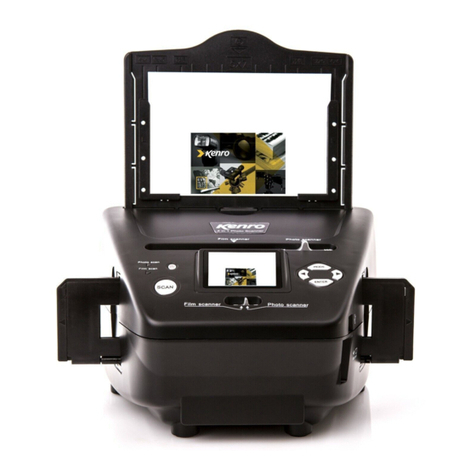
kenro
kenro KNSC302 instruction manual

Fujitsu
Fujitsu M4097D - Fb 50PPM SCSI A3 Dupl 100Sht Adf Illustrated parts catalogue
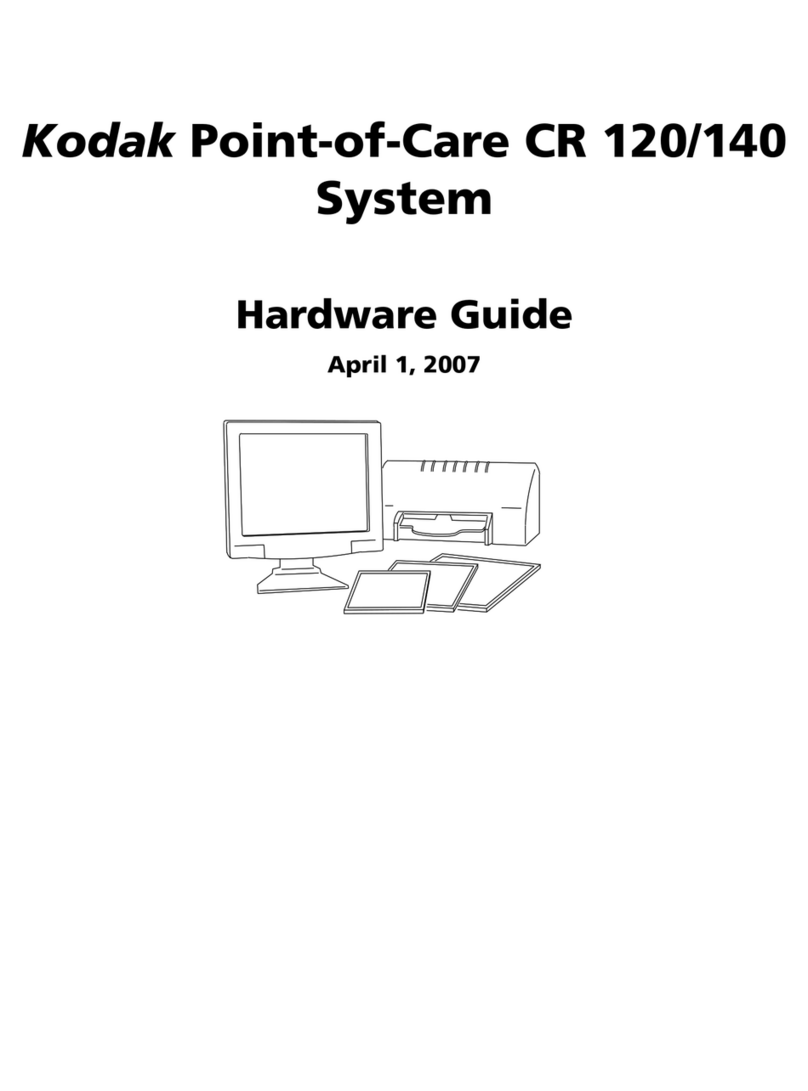
Kodak
Kodak Point-of-Care CR 120 System Hardware guide
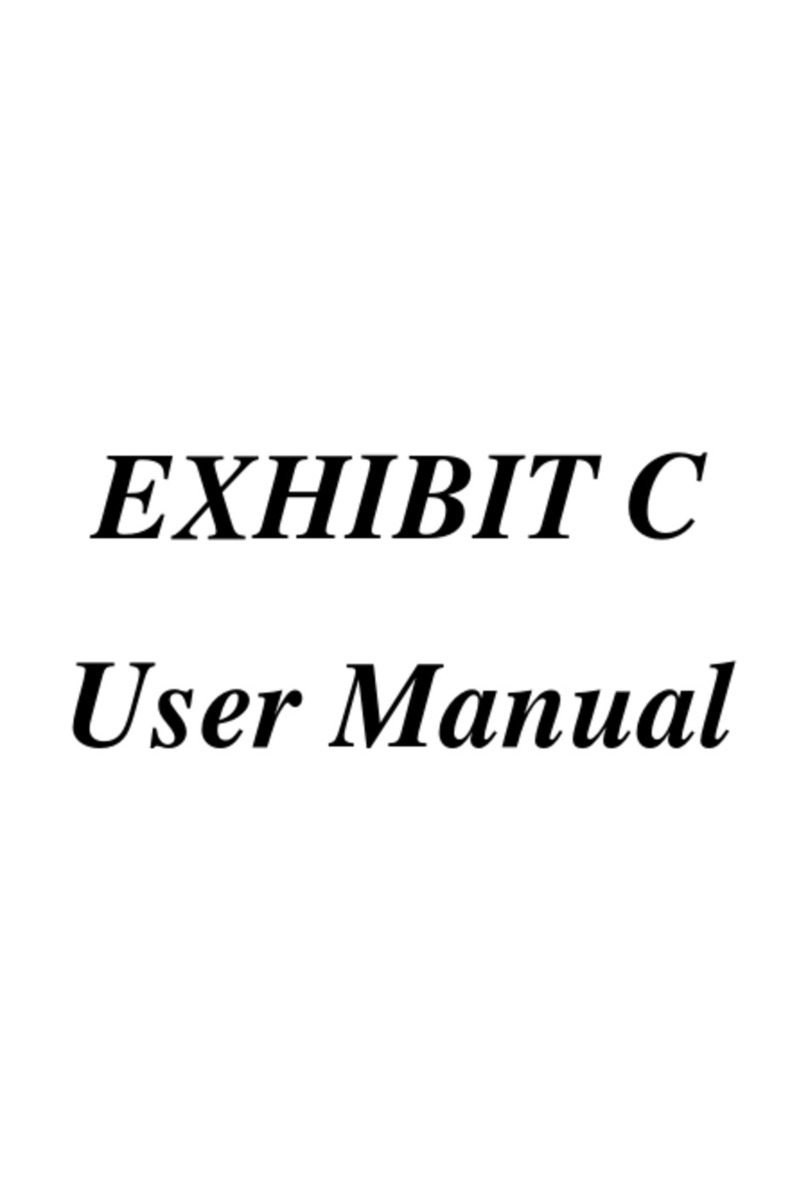
Pacific Image Electronics
Pacific Image Electronics PF1800Lab manual
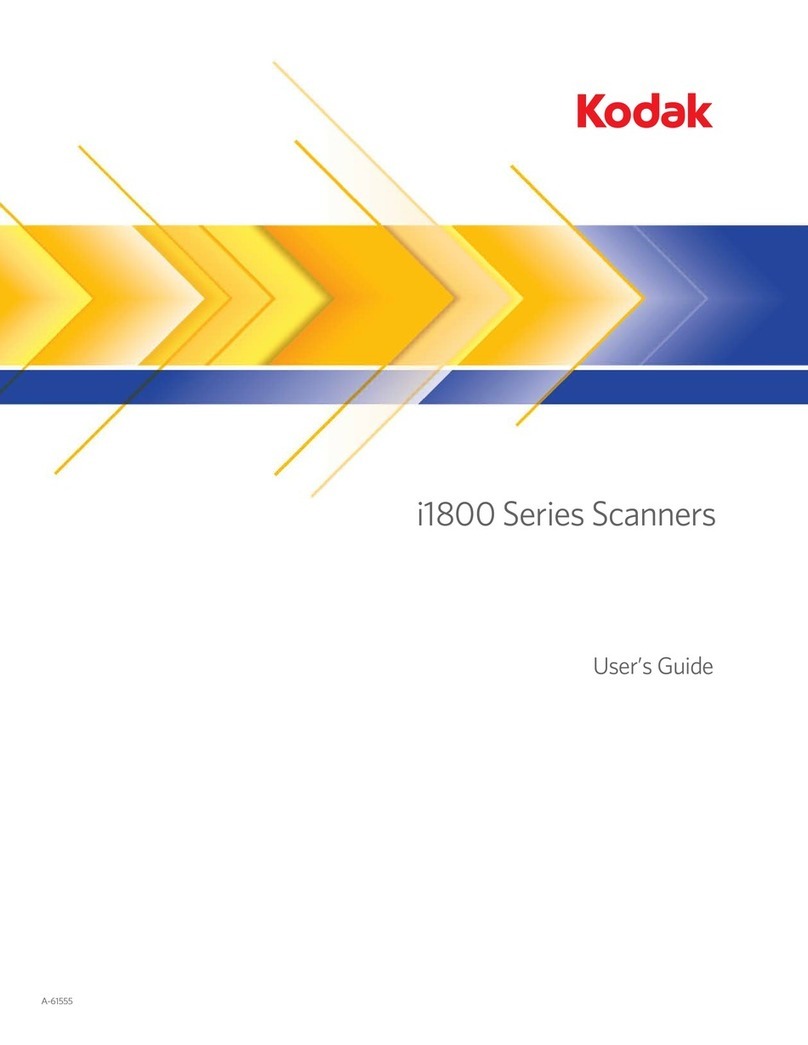
Kodak
Kodak Kodak i1840 user guide
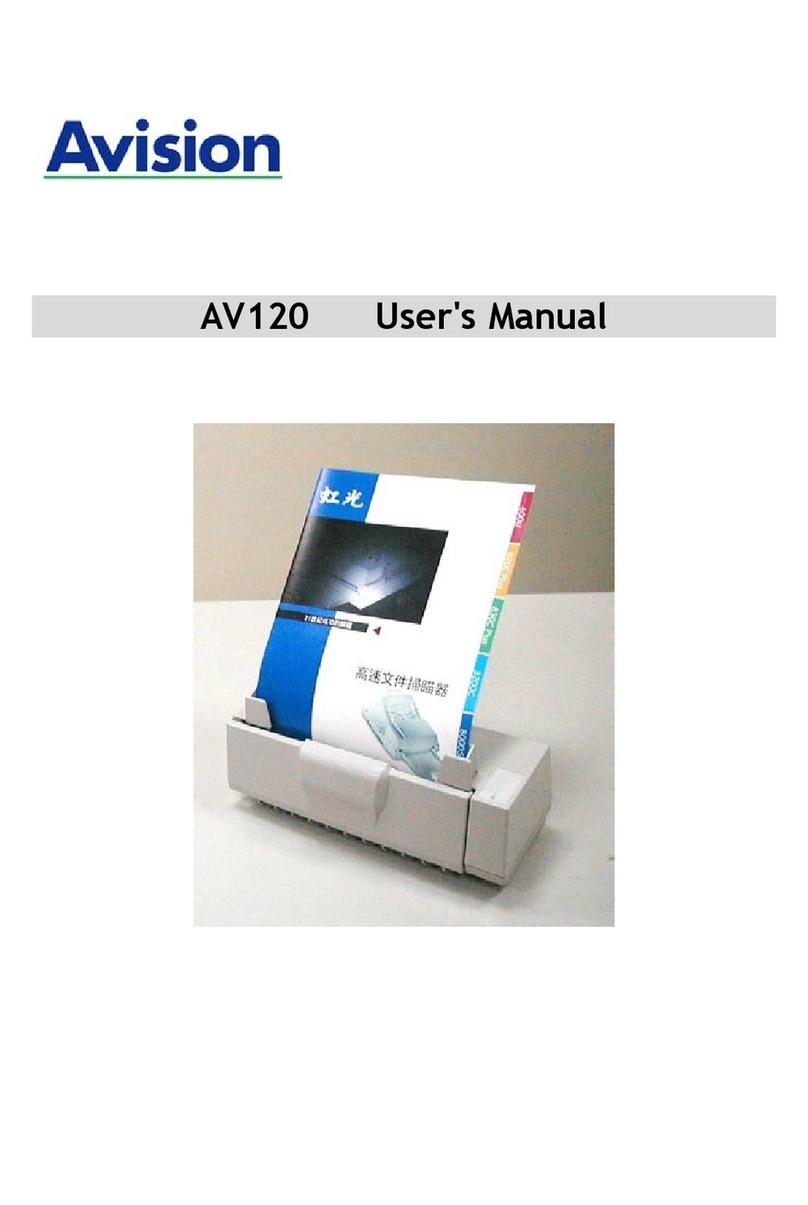
Avision
Avision AV120 user manual
